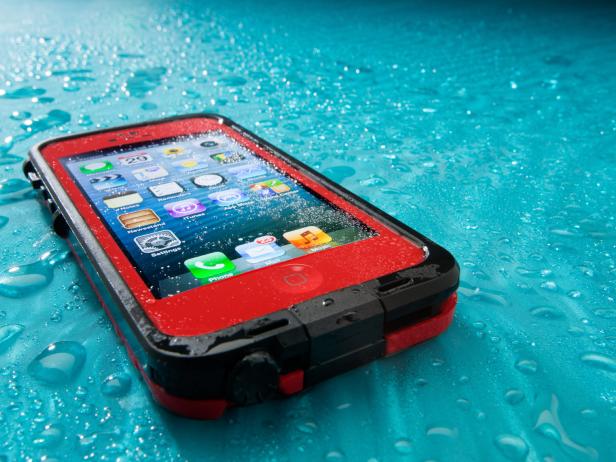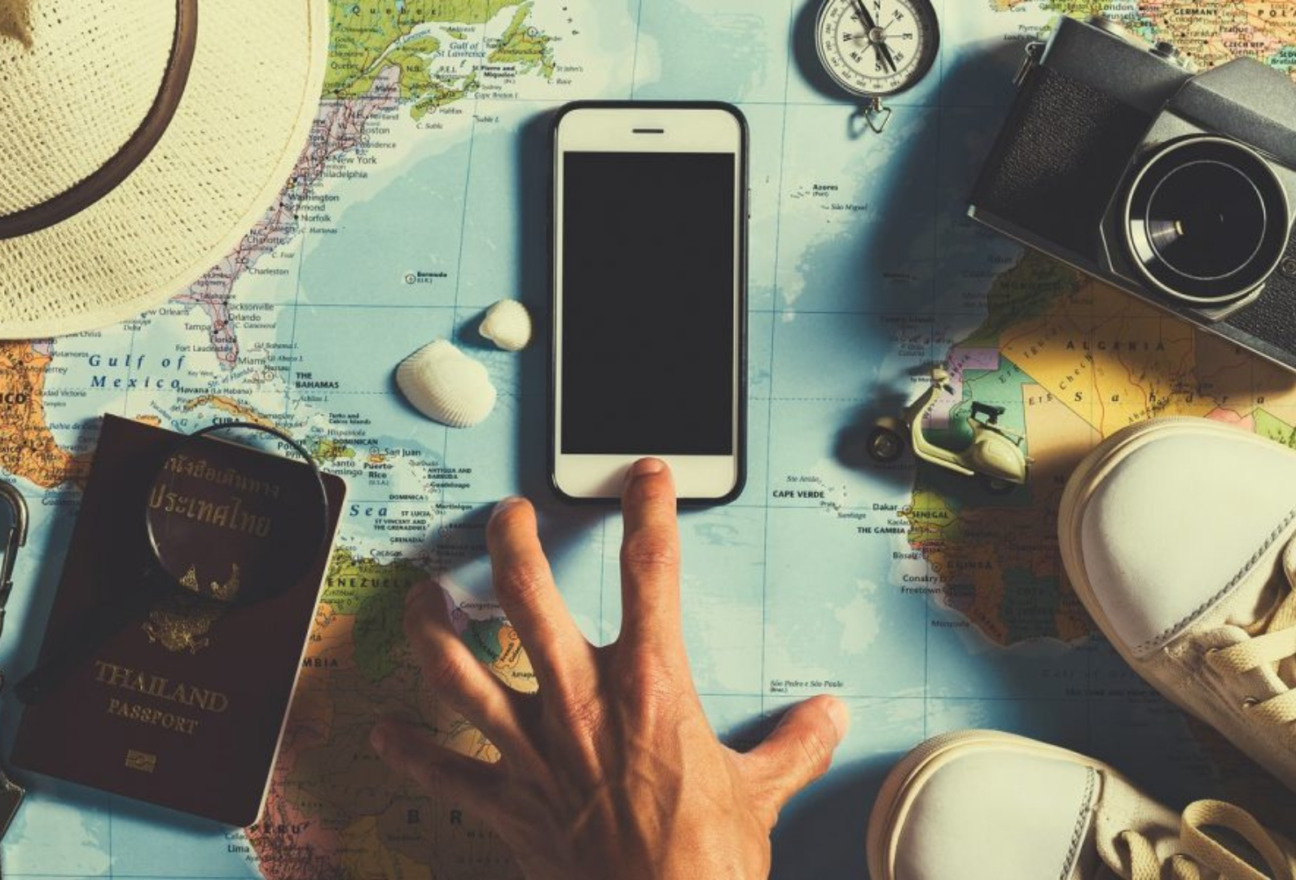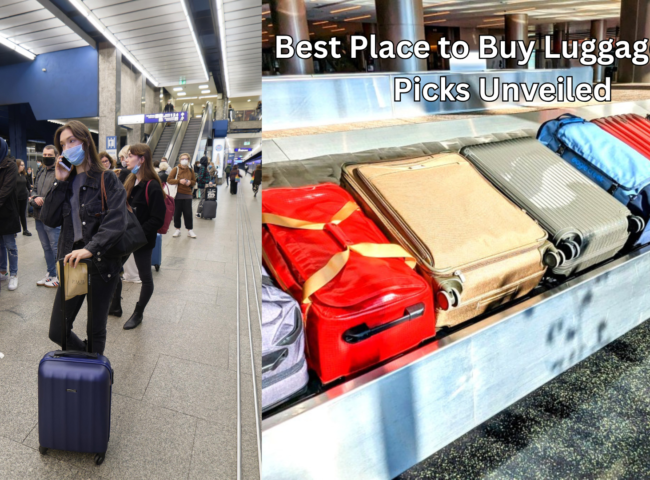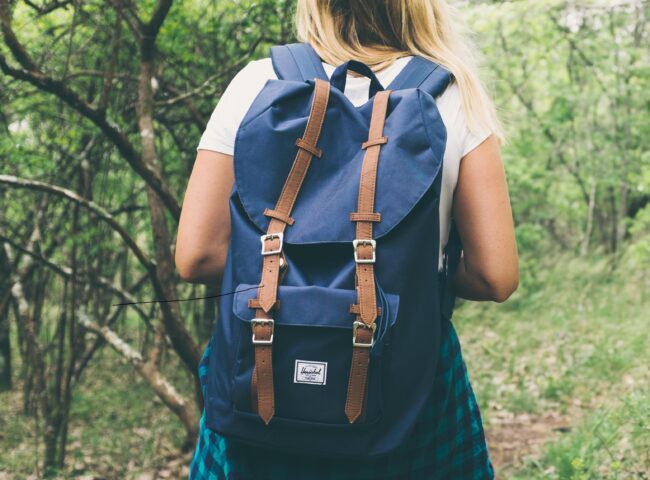How can you protect a mobile device while traveling Traveling can be exciting, but it brings risks to your mobile device. Protecting your phone or tablet is important to keep your personal information safe.
While you explore new places, your device faces threats like theft, loss, or hacking. Public Wi-Fi networks can expose your data. A simple mistake can lead to serious problems. You may lose valuable photos, contacts, or sensitive information. Knowing how to protect your device is crucial for a worry-free trip.
This guide will help you understand effective ways to secure your mobile device while traveling. With the right tips, you can enjoy your adventures without constant fear for your device’s safety. Let’s explore how to keep your mobile device secure on the go.

Credit: www.travelchannel.com
Pre-travel Preparations
Traveling with a mobile device can be fun and convenient. However, it also comes with risks. You may lose your phone or have it stolen. To keep your device safe, you need to prepare before you travel. Pre-travel preparations are essential. They help you protect your data and ensure your device works well while you explore.
Backup Your Data
Backing up your data is one of the most important steps. You don’t want to lose your photos, contacts, or important documents. A good backup strategy can save you from stress. Follow these steps to back up your data:
- Use cloud storage. Services like Google Drive, Dropbox, or iCloud are great options.
- Backup your photos and videos. Use apps that automatically upload your media.
- Save important documents in a secure location. Consider using PDF files for easy access.
- Export contacts from your phone. Save them in a file or sync with an online service.
Here is a simple table to help you choose a backup method:
| Backup Method | Pros | Cons |
|---|---|---|
| Cloud Storage | Accessible anywhere, easy to use | Requires internet access |
| External Hard Drive | Large storage capacity | Can be lost or damaged |
| USB Flash Drive | Portable and easy to carry | Limited storage space |
Make sure to check your backup regularly. This will ensure everything is safe and up to date.
Update Software
Keeping your mobile device’s software updated is crucial. Software updates fix bugs and improve security. An outdated device may face risks. Here’s how to update your software:
- Check for updates in your settings. Look for the “Software Update” option.
- Enable automatic updates. This ensures your device updates without you needing to do anything.
- Update your apps regularly. App updates can also fix security issues.
- Read update notes. These notes explain what changes and fixes are included.
Consider these benefits of updating your software:
- Improved security against hackers.
- Better performance and speed.
- New features to enhance user experience.
Don’t skip software updates. They are a simple way to keep your mobile device safe while traveling.
Choosing The Right Device
Traveling with a mobile device requires careful planning. Choosing the right device is crucial for security. A secure device helps protect your personal information. It also minimizes the risk of theft or loss. Understanding your options can make a big difference.
Select A Secure Device
Picking a secure mobile device is essential for safe travel. Various factors affect how secure a device is. Look for devices that have strong security features. Here are key features to consider:
- Operating System Updates: Regular updates fix security flaws.
- Built-in Security Features: Look for features like fingerprint sensors or facial recognition.
- Data Encryption: Encrypts your data to protect it from unauthorized access.
- Remote Wipe Capability: Allows you to erase data if the device is lost.
Some devices stand out for their security. Here’s a quick comparison of popular secure devices:
| Device | Security Features | Price Range |
|---|---|---|
| iPhone 14 | Face ID, Regular Updates, Data Encryption | $799 – $1,099 |
| Samsung Galaxy S23 | Fingerprint Scanner, Knox Security, Remote Wipe | $799 – $1,199 |
| Google Pixel 7 | Regular Updates, Titan M2 Chip, Data Encryption | $599 – $899 |
Choose a device that fits your needs and budget. Secure devices protect your information while you travel. Make an informed choice.
Consider A Travel Phone
A travel phone can be a smart choice for your trip. These phones are often less expensive and easier to replace. Using a travel phone reduces the risk of losing your primary device. Here are some benefits:
- Cost-Effective: Save money by using a less expensive model.
- Easy to Replace: If lost, it’s easier to replace than a high-end phone.
- Local SIM Compatibility: Use a local SIM card for cheaper data and calls.
When selecting a travel phone, consider these factors:
- Check compatibility with local networks.
- Look for a sturdy design.
- Ensure it has good battery life.
- Verify it has essential apps for travel.
Some popular travel phone options include:
| Phone Model | Key Features | Price Range |
|---|---|---|
| Nokia 3310 | Long Battery Life, Durable, Simple Interface | Under $100 |
| Motorola Moto G Power | Great Battery Life, Affordable, Good Camera | $200 – $300 |
| Samsung Galaxy A Series | Affordable, Good Performance, Reliable | $250 – $400 |
Using a travel phone keeps your main device safe. It also offers peace of mind during your travels.
Physical Security Tips
Traveling brings excitement and new experiences. It also brings risks, especially for mobile devices. Physical security is key to keeping your device safe while on the go. Simple steps can protect your phone or tablet from theft or damage. Here are some tips to ensure your mobile device stays secure during your travels.
Use A Strong Case
A strong case is essential for protecting your mobile device. It acts as a barrier against drops, scratches, and impacts. Choose a case that fits your device well. Look for these features:
- Durability: Select a case made from tough materials like polycarbonate or silicone.
- Shock Absorption: A case with shock-absorbing technology helps reduce damage from falls.
- Water Resistance: Consider a waterproof case if you plan to travel in wet conditions.
- Screen Protector: Add a screen protector to guard against scratches and cracks.
Here’s a quick comparison of different case types:
| Case Type | Durability | Weight | Price Range |
|---|---|---|---|
| Hard Case | High | Light | $15 – $50 |
| Soft Case | Medium | Very Light | $10 – $30 |
| Waterproof Case | Very High | Medium | $20 – $80 |
Investing in a quality case is wise. It can save you from costly repairs or replacements. Keep your device safe and functional throughout your travels.
Keep It Close
Keeping your mobile device close is crucial for its security. Always be aware of your surroundings. Here are some effective ways to keep your device safe:
- Use a Zippered Bag: Store your device in a zippered pocket or bag. This keeps it secure from pickpockets.
- Wear it on Your Body: Use a crossbody bag or a belt pouch. This ensures your device is always within reach.
- Avoid Leaving it Unattended: Never leave your phone on tables or counters. It can be snatched easily.
Follow these best practices:
- Check your bag before leaving a location.
- Carry your device in front of you, not behind.
- Be cautious in crowded areas. Always keep your bag close.
Staying vigilant can prevent theft. Trust your instincts if something feels off. Protecting your device is as important as enjoying your trip.
Network Safety
Traveling is exciting. You can explore new places and experience different cultures. However, keeping your mobile device safe is crucial. One major concern is network safety. Public networks can expose your data to hackers. Protecting your information while traveling is essential.
Avoid Public Wi-fi
Public Wi-Fi is everywhere. Cafes, airports, and hotels often provide free internet. It sounds convenient, but it can be risky. Here are some reasons to avoid public Wi-Fi:
- Unsecured networks are easy targets for hackers.
- Personal information can be stolen.
- Your online activity might be monitored.
Staying safe means being cautious. Here are some tips:
- Use your mobile data instead of public Wi-Fi.
- Turn off Wi-Fi when not in use.
- Connect only to trusted networks.
Consider this table for a quick overview:
| Network Type | Security Level |
|---|---|
| Public Wi-Fi | Low |
| Private Network | High |
| Mobile Data | Medium |
Be smart. Avoid public Wi-Fi whenever possible. Your data is worth protecting.
Use A Vpn
A Virtual Private Network (VPN) is a useful tool. It creates a secure connection over the internet. This helps keep your data safe. Using a VPN while traveling can offer many benefits:
- Encrypts your internet connection.
- Hides your IP address.
- Access geo-restricted content.
Setting up a VPN is simple:
- Choose a reliable VPN provider.
- Download the VPN app on your device.
- Connect to the VPN before using the internet.
Consider these points:
| VPN Advantage | Description |
|---|---|
| Security | Protects your data from hackers. |
| Privacy | Keeps your online activities hidden. |
| Access | Allows you to browse restricted sites. |
Using a VPN is an effective way to protect your mobile device. Make it a part of your travel routine.
Using Security Features
Traveling can be exciting, but it also comes with risks for your mobile device. Using security features is essential to keep your personal information safe. Smartphones hold a lot of sensitive data, including photos, contacts, and banking details. Protecting your device means protecting your privacy. Here are two key security features to focus on: two-factor authentication and strong passwords.
Enable Two-factor Authentication
Two-factor authentication (2FA) adds an extra layer of security to your accounts. It requires two forms of identification before granting access. This is especially useful while traveling. Here’s how to enable it:
- Go to your account settings.
- Look for security options.
- Select two-factor authentication.
- Choose your method (text message, email, or authenticator app).
Once enabled, you’ll need to enter a code sent to your phone or email, along with your password. This makes it harder for hackers to gain access.
Benefits of two-factor authentication:
- Increased security: Protects against unauthorized access.
- Peace of mind: Know your data is safer.
- Easy to set up: Most services offer simple steps to enable it.
Here is a quick comparison of common 2FA methods:
| Method | Security Level | Convenience |
|---|---|---|
| Text Message | Medium | High |
| Medium | High | |
| Authenticator App | High | Medium |
Enabling two-factor authentication is a smart choice. It makes it much harder for anyone to access your accounts while you travel.
Set A Strong Password
A strong password is your first line of defense. It should be unique and hard to guess. Avoid using common words or personal information. Here are tips to create a strong password:
- Use at least 12 characters.
- Include a mix of uppercase and lowercase letters.
- Add numbers and special symbols.
- Avoid common phrases or easily guessed information.
Consider using a password manager. These tools store and generate strong passwords. This way, you don’t have to remember every single one.
Here’s a list of strong password examples:
| Password Example | Strength Level |
|---|---|
| Gf7#tZ9&kQ | Strong |
| Strong | |
| pL8$sQ3!vY | Strong |
A strong password makes it difficult for hackers to access your device. Change passwords regularly to maintain security. Don’t share your passwords with anyone.

Credit: www.youtube.com
Travel Apps To Consider
Traveling is exciting, but it comes with risks, especially for your mobile device. Protecting your phone or tablet should be a priority. Travel apps can enhance your safety and make your trip smoother. Here are some essential apps to consider for better security and management while traveling.
Security Apps
Security apps are crucial for keeping your device safe. They help protect your data from theft and malware. Here are some features to look for:
- Antivirus Protection: Scans for harmful software.
- VPN Services: Encrypts your internet connection.
- Remote Wipe: Erases data if your device is lost.
Some popular security apps include:
| App Name | Features | Cost |
|---|---|---|
| McAfee Mobile Security | Antivirus, VPN, Anti-theft | Free / Premium options |
| Norton Mobile Security | Malware protection, Web protection | Paid subscription |
| Lookout Security | Security alerts, Backup options | Free / Premium options |
Using these apps can greatly reduce the risk of losing personal information. Always keep your apps updated for the best protection.
Travel Management Apps
Travel management apps help organize your trip. They can store itineraries, bookings, and travel details. This keeps everything in one place and easy to access.
- TripIt: Organizes travel plans automatically.
- Google Maps: Provides navigation and local information.
- Kayak: Compares flights, hotels, and car rentals.
These apps offer great features:
- Store all travel documents in one app.
- Get real-time alerts for flight changes.
- Find local attractions and restaurants easily.
Using travel management apps can save you time and reduce stress. They help you stay informed and prepared during your journey.
Emergency Protocols
Traveling can be exciting, but it comes with risks. Protecting your mobile device is crucial. Emergency protocols help you respond quickly if something goes wrong. Knowing what to do can save your data and personal information. In this section, we will discuss remote wipe capabilities and the importance of reporting theft immediately.
Remote Wipe Capability
Remote wipe capability is a key feature for protecting your mobile device. This function allows you to erase all data from your phone if it is lost or stolen. It ensures that your personal information stays safe from unauthorized access.
Many devices come with built-in options for remote wiping. Here are a few examples:
- iOS Devices: Use Find My iPhone to erase your device remotely.
- Android Devices: Use Find My Device through your Google account.
- Windows Phones: Use the Windows Device Recovery Tool.
To set up remote wipe capability, follow these steps:
- Enable location services on your device.
- Set up a secure password or PIN.
- Activate the remote wipe feature in your device settings.
Here is a simple table showing the steps to enable remote wipe on different devices:
| Device Type | Steps to Enable Remote Wipe |
|---|---|
| iOS | Settings > Apple ID > iCloud > Find My iPhone |
| Android | Settings > Google > Security > Find My Device |
| Windows Phone | Settings > Update & Security > Find My Phone |
Always test this feature before traveling. Make sure you understand how to use it. Being prepared can help protect your data in emergencies.
Report Theft Immediately
If your mobile device gets stolen, report it immediately. Quick action can limit damage. Start by contacting your local authorities. Provide them with details about the theft.
Next, inform your mobile carrier. They can suspend your service to prevent unauthorized use. Most carriers have specific steps for reporting stolen devices. Here’s a general list of actions to take:
- Gather information about your device (make, model, and serial number).
- Contact your carrier’s customer service.
- Follow their instructions for reporting theft.
Consider also reporting the theft to local law enforcement. This can help in recovery efforts. Here’s what you usually need:
- A detailed description of the device.
- The location and time of the theft.
- Your contact information.
Remember, the faster you act, the better your chances of recovering your device. Keep a record of your reports. This may help in case of insurance claims.

Credit: www.rezaid.co.uk
Post-travel Actions
Traveling can be fun, but it can also put your mobile device at risk. After your trip, it’s important to take certain actions to protect your data. Post-travel actions help secure your device and keep your personal information safe. Follow these steps to ensure your mobile device remains secure after your travels.
Change Passwords
Changing passwords after traveling is essential. This helps protect your accounts from unauthorized access. Here are some steps to follow:
- Change passwords for your email, banking, and social media accounts.
- Use strong passwords that mix letters, numbers, and symbols.
- Consider using a password manager to keep track of your passwords.
Follow this simple table to create strong passwords:
| Tip | Description |
|---|---|
| Length | At least 12 characters long |
| Variety | Include upper and lower case letters, numbers, and symbols |
| Avoid | Do not use personal information like names or birthdays |
Changing passwords regularly is a good practice. It adds an extra layer of protection. Do not forget to update passwords for any apps you used during your trip.
Review Security Settings
Checking your mobile device’s security settings is vital after traveling. Make sure everything is up to date and secure. Here are some important settings to review:
- Enable two-factor authentication on all accounts.
- Check app permissions and remove any that seem suspicious.
- Update your device’s operating system and apps.
Follow these steps to enhance your device’s security:
- Go to the settings menu on your device.
- Look for the security option and tap on it.
- Review options like screen lock, biometric settings, and encryption.
Remember to regularly review security settings. This keeps your mobile device safe and protects your personal information.
Frequently Asked Questions
How Can You Protect A Mobile Device While Travelling Cyber Awareness 2025?
Protect your mobile device while traveling by using strong passwords and biometric locks. Keep software updated and enable remote wipe capabilities. Avoid public Wi-Fi; use a VPN instead. Regularly back up data and disable Bluetooth when not in use. Be cautious of unfamiliar apps and only download from trusted sources.
How Can You Protect The Mobile Device While Traveling?
Secure your mobile device with a strong password or biometric lock. Use a virtual private network (VPN) for safe browsing. Avoid public Wi-Fi networks and disable Bluetooth when not in use. Keep your device’s software updated and back up important data regularly.
Use tracking apps for added security.
How Can I Use My Cell Phone Internationally Without Charges?
Use a local SIM card to avoid international charges. Consider a global roaming plan from your carrier. Connect to Wi-Fi for calls and messaging. Use apps like WhatsApp or Skype for communication. Always check your phone settings to prevent data roaming fees.
What Is The Best Way To Secure Your Portable Device?
Use strong passwords and enable biometric locks. Regularly update software and apps for security patches. Install reputable antivirus software and avoid public Wi-Fi for sensitive tasks. Back up data frequently and encrypt sensitive information. Keep your device physically secure with a case or lock.
Conclusion
Protecting your mobile device while traveling is essential. Use strong passwords and security features. Keep your software updated to guard against threats. Consider using a VPN for safer internet connections. Avoid public Wi-Fi when possible. Always back up important data before your trip.
Store your device securely when not in use. Stay aware of your surroundings to prevent theft. By following these tips, you can enjoy your travels with peace of mind. Stay safe and keep your device secure. Your phone is valuable; treat it that way.
visit our another webpage click now







